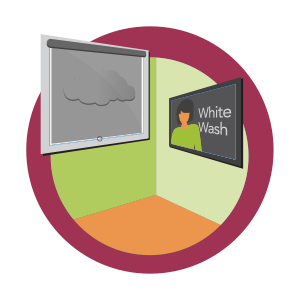Luminance is the amount of light that enters the eye. It comes directly from light sources but is also reflected off surfaces in the visual field. Luminance contrast is the ratio between the luminance values of adjacent surfaces. High luminance contrast ratios are perceived as glare.
Uncontrolled light can contrast with dark adjacent surfaces or spaces. The eye cannot adapt to both the light and the dark points in the visual field which the viewer may perceive as glare. An emphasis on energy savings has increased day light usage in interiors while decreasing the amount of electric light available. This may create a high variance of light throughout the day which is difficult to accommodate for.
Luminance ratios should not exceed 1:3 according to the Illuminating Engineering Society. However, task areas can be 1.5-3 times brighter than the surrounding areas. High luminance ratios can cause visual fatigue and glare. See the Glare appendix to learn more about measurements. Ambient illuminance level for Offices and other activity areas should be 30 fc (300 lux) while task lighting should be at 50 fc (500 lux).
Persons who are 65 or older may need four times the amount of light or more to complete the same task as a 25 year old adult according to the 2010 IES handbook. When designing the light in a space, consider the quality of the increased light levels provided. Use low sheen materials to reduce veiling reflectance and glare and keep finishes adjacent to windows light colored to soften the contrast between adjacent surfaces and reflect good quality light farther into the room. Provide automated controls to adjust light from the source or window. Provide task lighting at the worksurface where additional light is needed. Move the light to the side of a task instead of overhead to protect the eye from reflections.
(For more information see the Glare Indices or Luminance Mapping)
Glare is the ratio between the luminance of the source and the luminance of the background. Glare index equations can be used to calculate the probability of glare. Results fall within a range from Intolerable to Barely Perceptible. To learn more about how to measure glare see the appendix, however, do not rely solely on the numbers. No system was intended for use in calculating glare for the aging eye or for those with vision loss. Persons in these demographic groups are likely to be more sensitive to glare.

A large area source like a window makes it difficult to distinguish shaded objects in front of it such as furniture or people. The human eye has trouble adapting to excessive luminance contrast. If the ambient light level is increased or the large source is shielded, the luminance contrast will be reduced.
Outdoors views are important for occupant well-being and wayfinding, but the variability of exterior light and the extreme contrast between outdoor light and shaded interiors is often not well considered or designed. Not enough light on task surfaces adjacent to the area source further reduces visibility.

![]()
Supplemental room lighting is not enough to counteract the glare from direct sun.
![]()
Our eye adapts to the brightest source in the visual field, making the darker surroundings invisible to someone walking here.
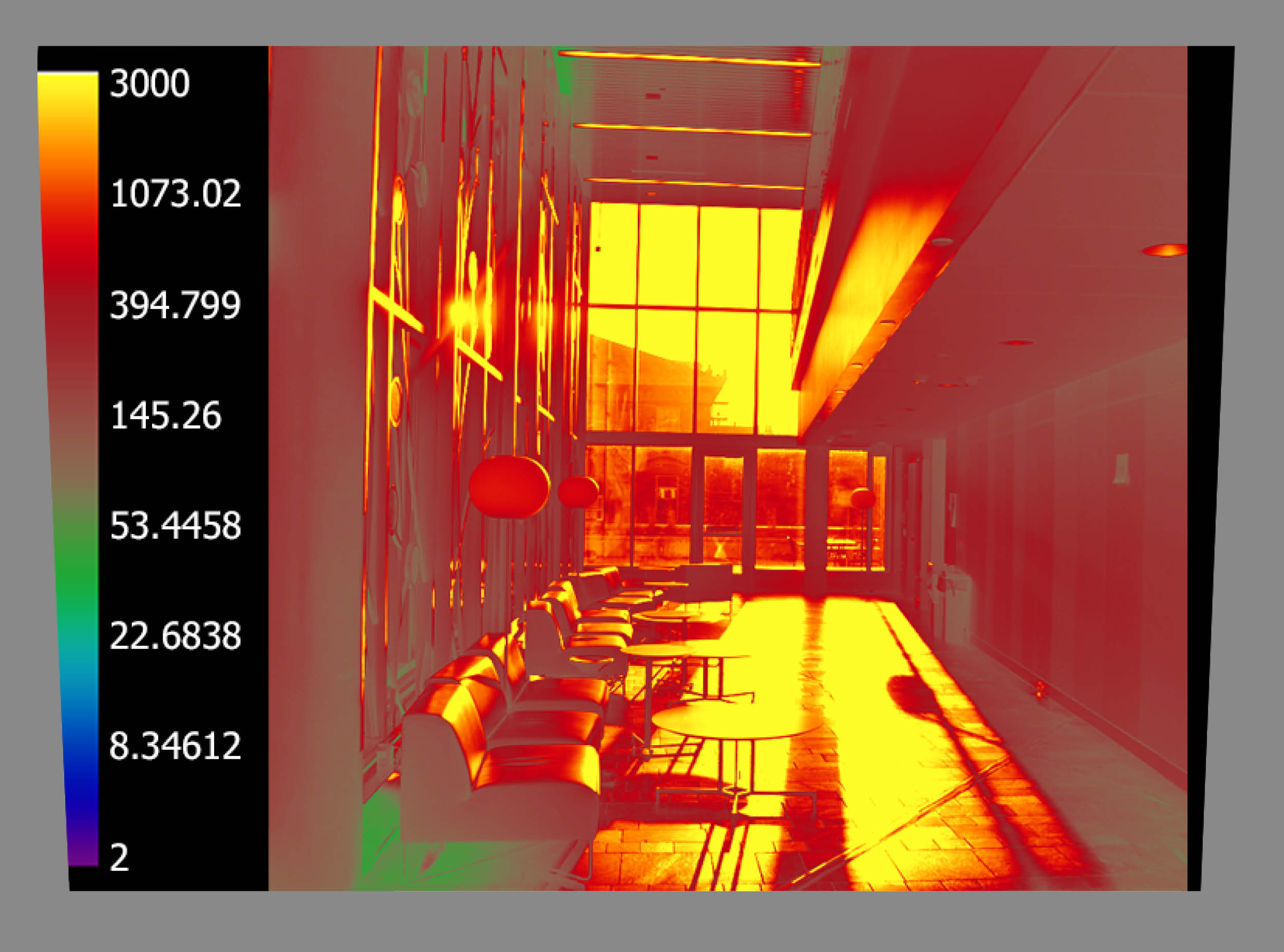
![]()
Glare Analysis:
DGP 0.414890 (Disturbing)
DGI 28.814548(Disturbing)
VCP 3.23 (3.23% of people are comfortable in this space)
Lveil: 671.121
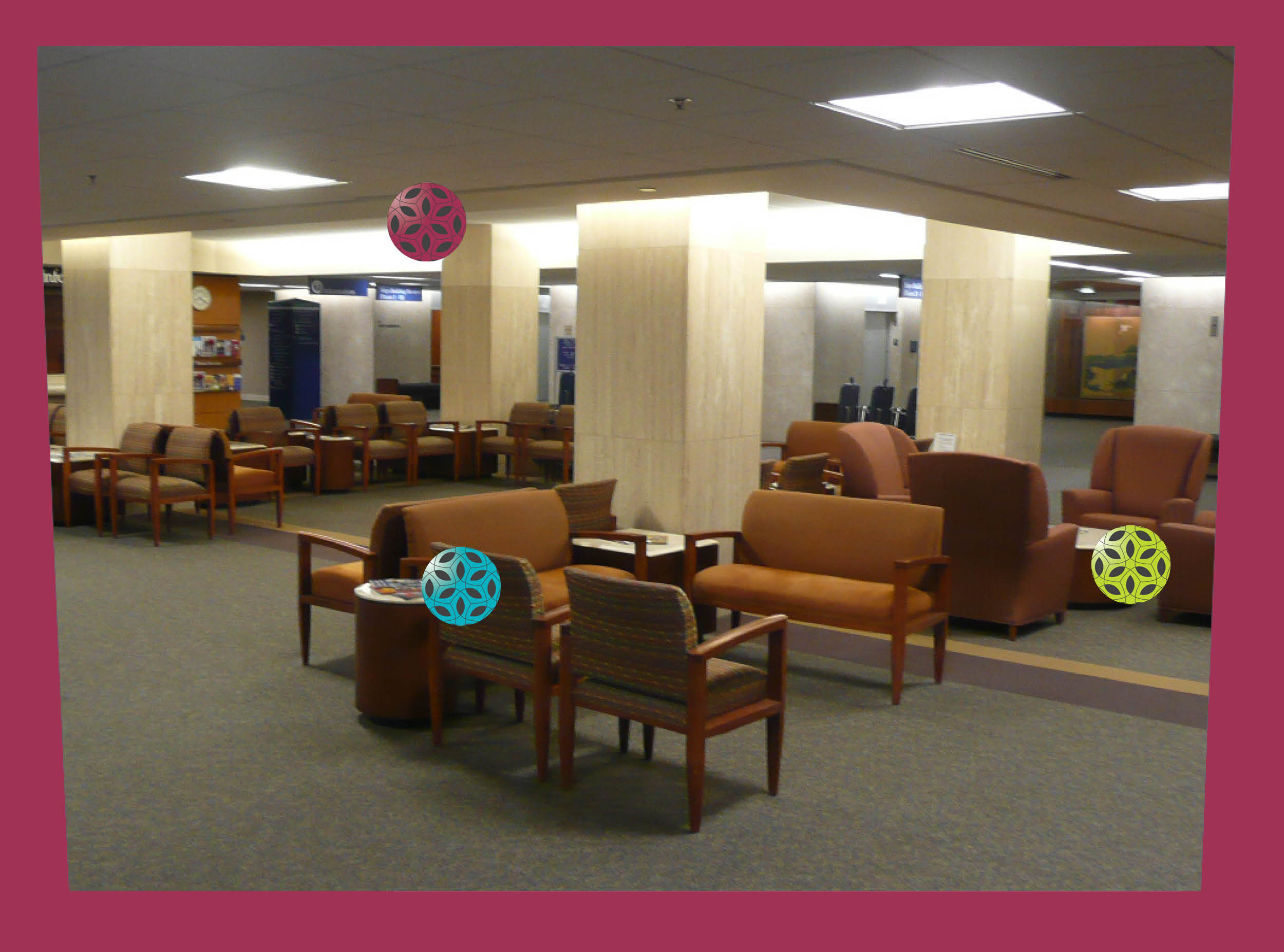
![]()
Indirect, cove-lighting supplies even, ambient light.
![]()
Good value contrast between furniture and flooring identifies obstacles.
![]()
Multi-directional furniture layouts allow users to select their view.

High luminance contrast between a small, very bright light source and a relatively dim background causes point-source glare. These sources are often small halogen lamps or LED fixtures that are intended as accent lighting in retail or gallery spaces but instead are used as ambient or task lighting.
In spaces with low ceilings, point sources are mounted too close to the line of sight causing discomfort. Point sources have a very narrow beam of light making it difficult to achieve even light distribution and increasing the contrast between the brightly lit areas and dark surroundings. Aging eyes may also experience "scatter" of light in the eye from bright sources in the field of view.
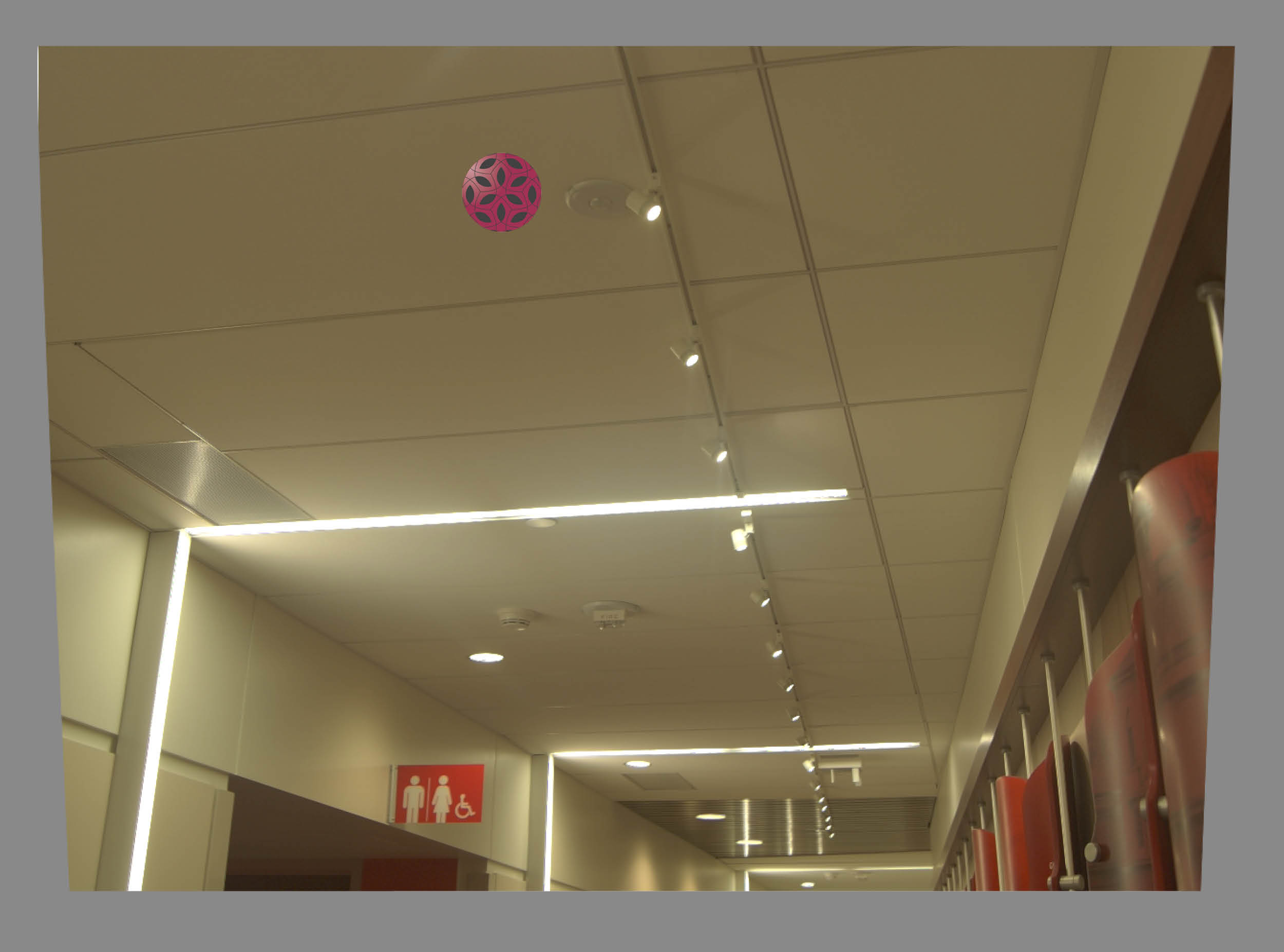
![]()
Point sources create glare in the field of vision.
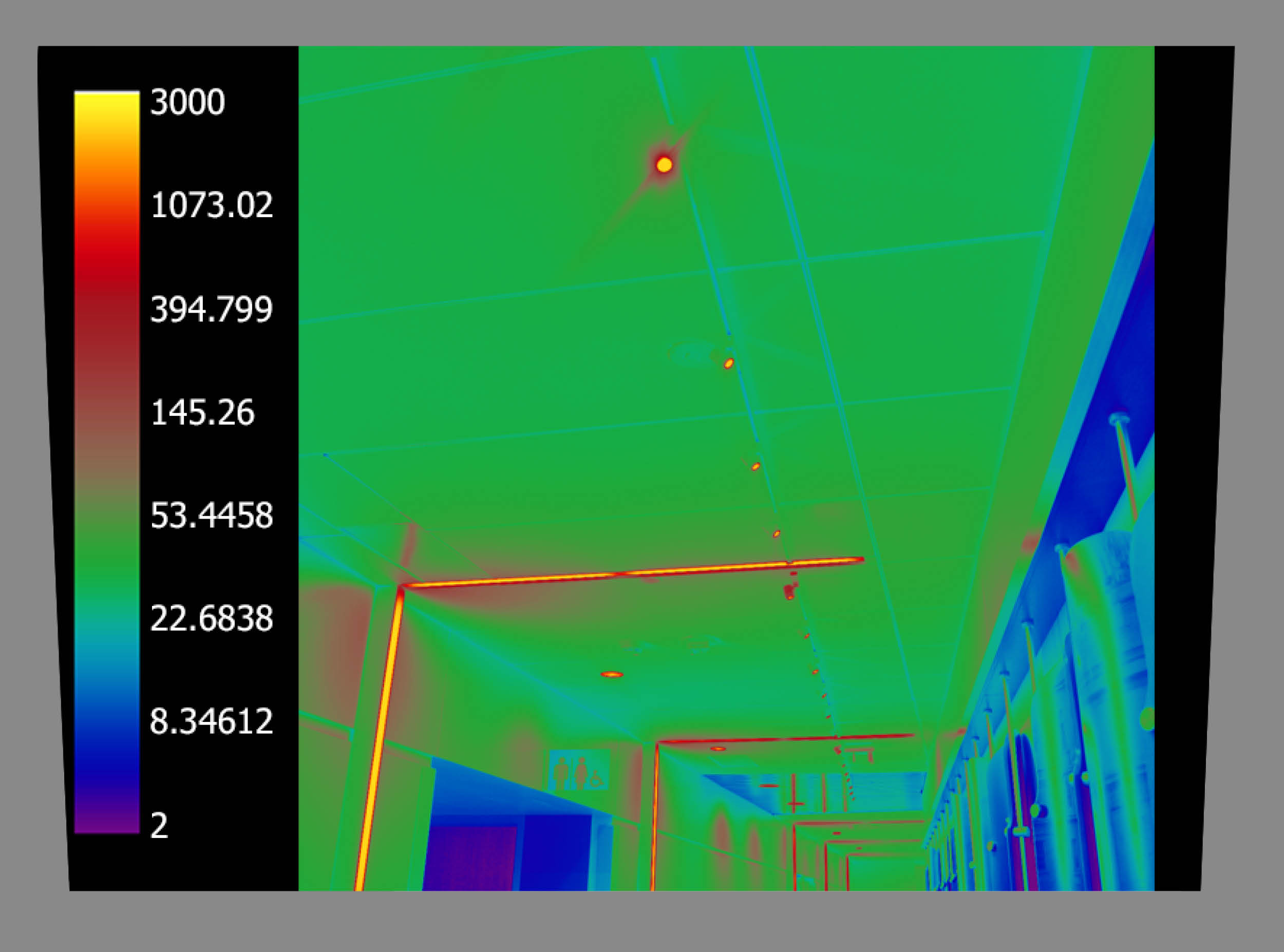

![]()
Low wattage point sources add good sparkle and interest.


Veiling luminance reduces the contrast of a visual task and obscures detail. It occurs when a source creates a specular, or scattered reflection off a surface that reaches the eye. Like the projection screen that is hard to see until the lights are turned off, veiling luminance reduces the contrast in the visual field.
Reflective surfaces are the biggest cause of veiling luminance. Task surfaces, especially backlit computer or e-reader screens, reflect ambient light and are difficult to see due to reduced contrast. Veiling luminance on glass makes it difficult to see objects on the other side, especially at night. Lack of adjustable lighting or window controls hinders visibility.
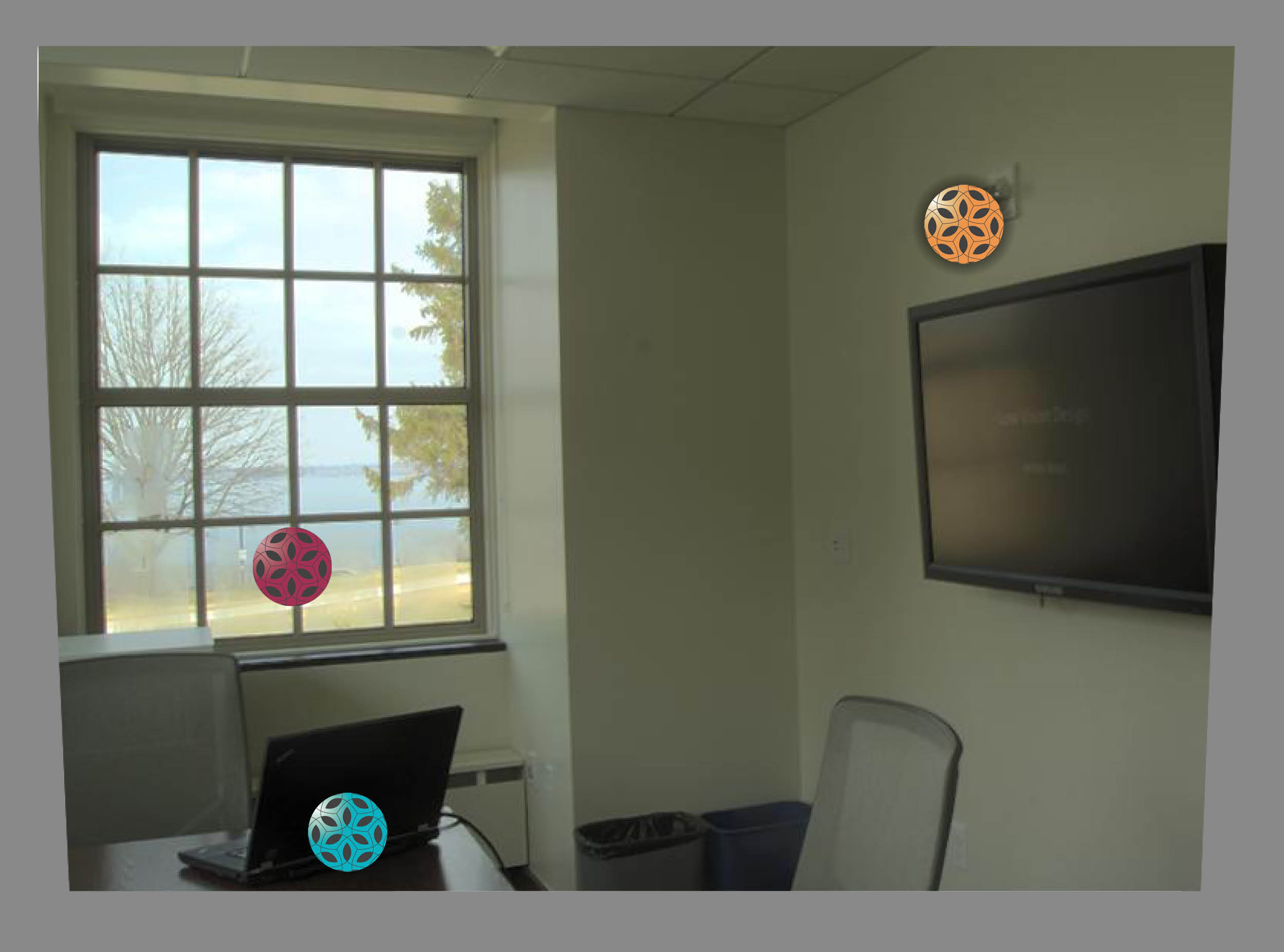
![]()
Unshielded light can obscure the visual path.
![]()
Reflected light can create scatter in the eye, lowering visual contrast further.
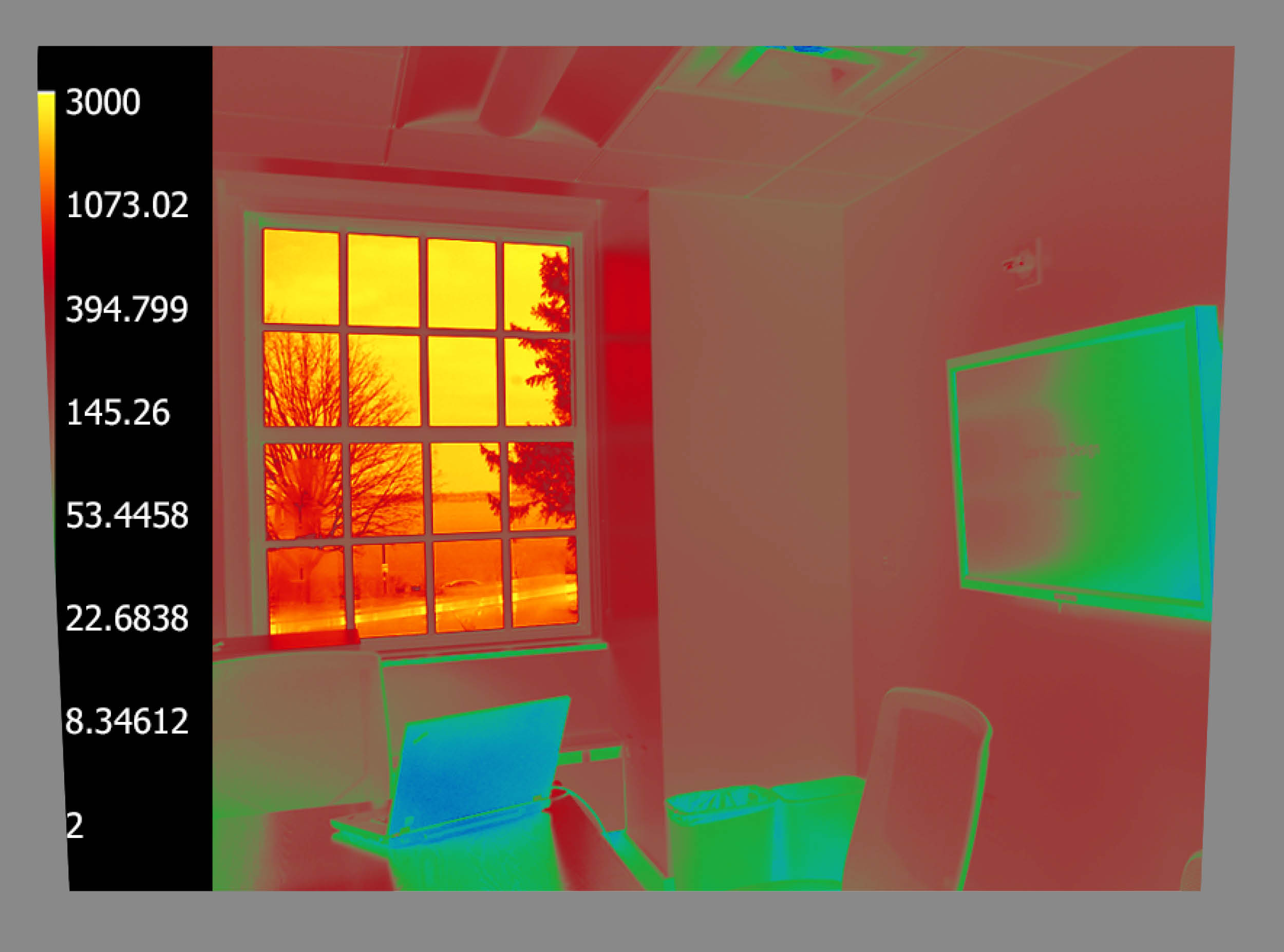
![]()
Glare Analysis:
DGP 0.226 (Perceptible glare)
DGI 18.579(Imerceptible glare)
VCP 46.778 (46% of people are comfortable in this space)
Lveil: 30.038
Most areas should have a maximum luminance ratio of 8:1 between a brighter ceiling or source and the surrounding materials. A luminance ratio of 4:1 or less is recommended for any reflections falling on critical tasks (IES, 2010, Table 12.5).
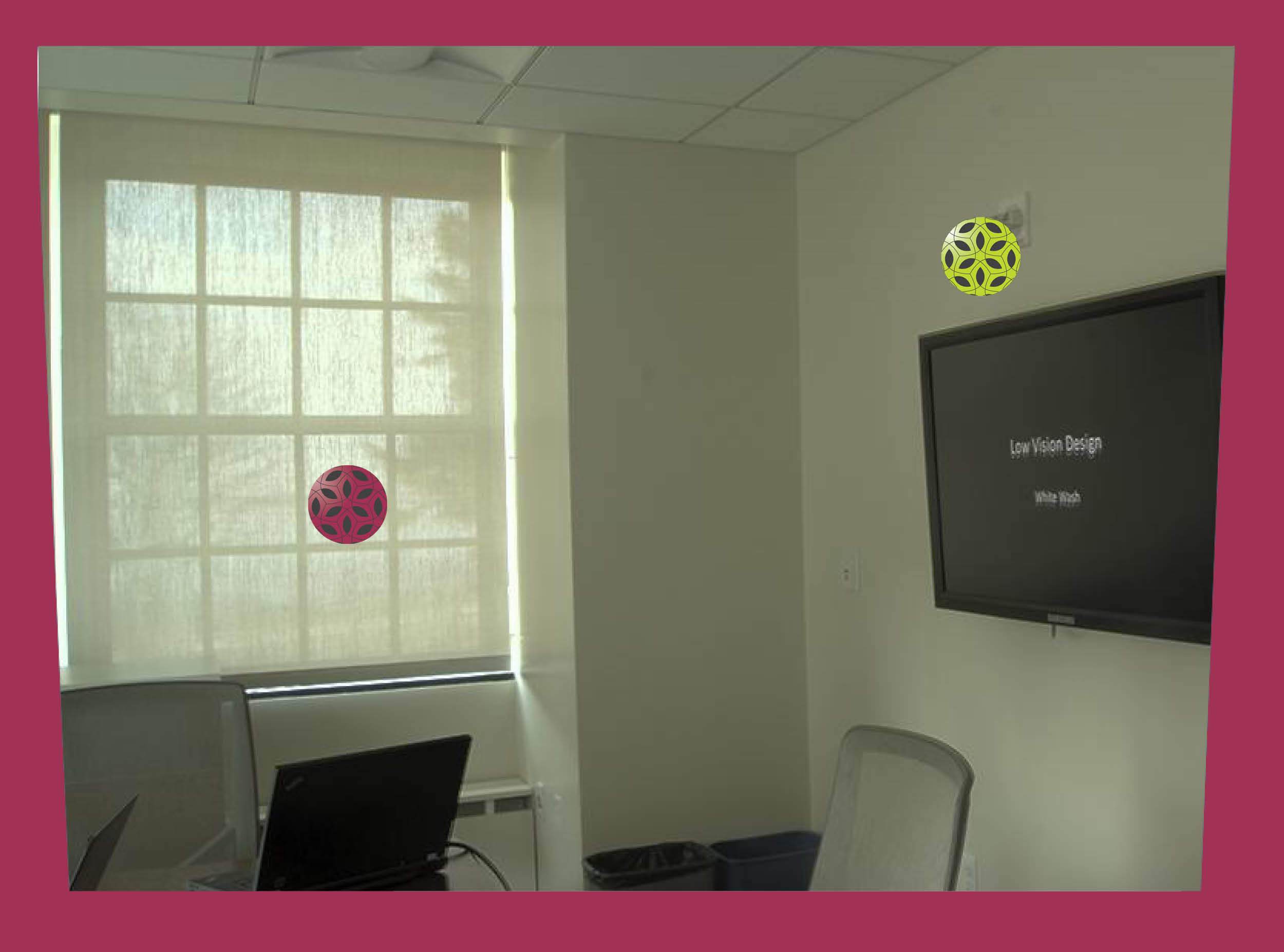
![]()
Controlling the source immediately reduces vailing luminance on the work surface and screen.
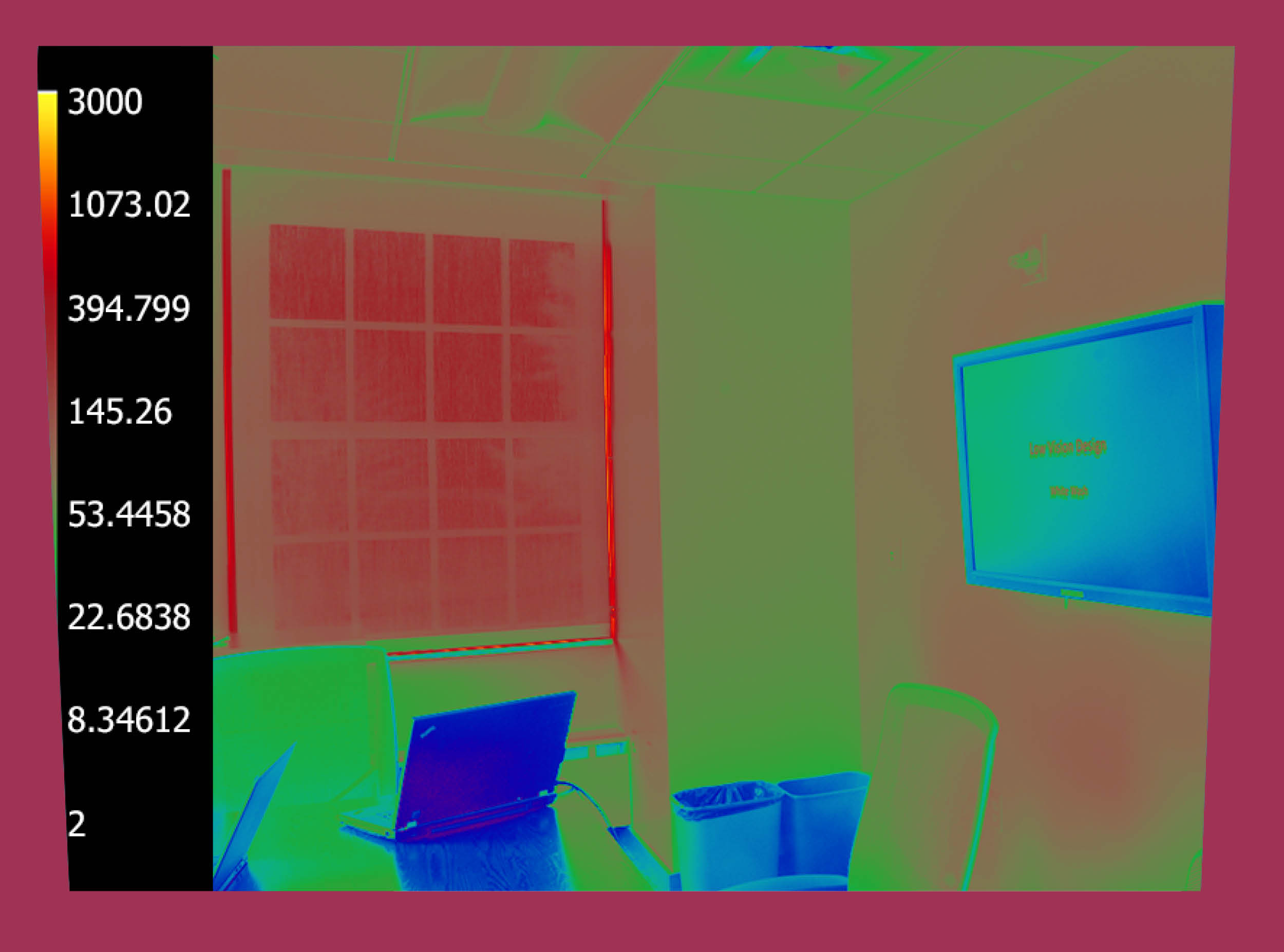
![]()
Glare Analysis:
DGP 0.016 (Perceptible glare)
DGI 9.143(Imerceptible glare)
VCP 97.74 (97% of people are comfortable in this space)
Lveil: 1.579187
